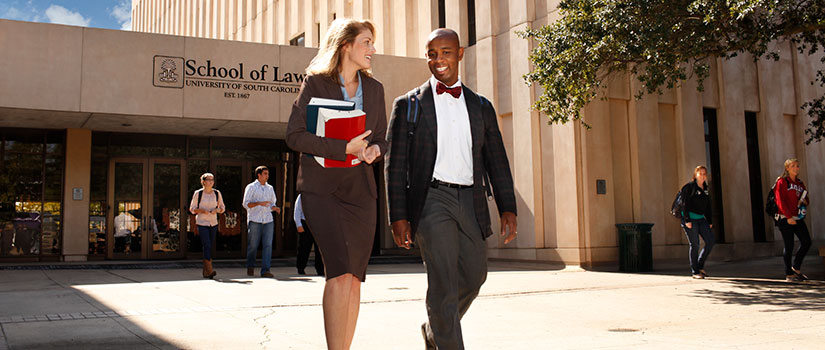Some living alumni may remember a time when law school classes were all white and almost all male. Seeds of change, however, were planted in the 1940s and blossomed into permanent changes two decades later.
In 1940, Sarah Leverette entered the law school as one of only three female students. She was the only one to graduate, and went on to become the first female faculty member.
In 1946, an African American named John H. Wrighten applied for, and was denied, admission to the School of Law. He sued the university, and in Wrighten v. Board of Trustees of University of South Carolina, the United States District Court ordered that the state either admit African Americans to the University of South Carolina School of Law or to another school with equal facilities or not operate a law school at all. Subsequently, a law school was opened for non-white students at South Carolina State College. It was closed in 1966, just two years after the University of South Carolina re-integrated.
When SC State's law school closed, many of its law students transferred to South Carolina Law to finish their legal education. Jasper Cureton, later a judge on the South Carolina Court of Appeals, was one of those students. In 1967, he became the first African-American graduate of the School of Law since Reconstruction. One year later, I.S. Leevy Johnson became the first African-American graduate to attend all three years at South Carolina Law since Reconstruction.
Costing $250,000, the second Petigru College opened in 1950 and featured such modern amenities as a practice court, cubicles in which students could type without disturbing others, and a library large enough hold its 40,000 volumes. In 1953, air conditioning was added.
However, the student population boomed in the decades that followed, growing from 173 students in 1960 to 496 in 1970, forcing the School of Law to once again seek a new home. The Law Center at 701 Main Street, was dedicated in 1974, with Lewis F. Powell Jr., an associate justice of the United States Supreme Court, and Vice President Gerald R. Ford as featured speakers.
Unfortunately, the $5.9 million building didn’t anticipate the sweeping changes that would soon be coming, and many amenities were noticeably absent, including technological capacity and women’s bathrooms.
The computer revolution was still some ways off, and so may be forgiven, but it was during the 1970s that women finally began to constitute a significant percentage of the student population, growing from only a handful in the Class of 1970 to nearly 50 women in the Class of 1980.
The School of Law was in the vanguard of perhaps the most significant change in legal education in a generation, creating one of the nation’s first clinical programs. But it was another area that had not been anticipated, leaving less than adequate space during the next 40 years for a program that operates much like a law firm. Now, at a time when experiential learning is receiving new emphasis nationally, the School of Law Clinics enjoy a far more appropriate space with more than 4600 square feet of offices, work areas, and interview rooms.
During the 1980s, the School of Law began one of its most cherished traditions, the outdoor graduation on the Horseshoe. It was also awarded a chapter in the Order of the Coif.
In 1989, the School of Law developed the nation’s first voluntary law school Pro Bono Program, which was later selected as one of President George H.W. Bush’s thousand points of light. With more than 30 volunteer opportunities, it continues today under the guidance of its only director, Pamela D. Robinson.
And in 1995, the Children’s Law Center was created to promote policies in the best interests of children, and provide continuous child protection advocacy training for the state’s legal community.
